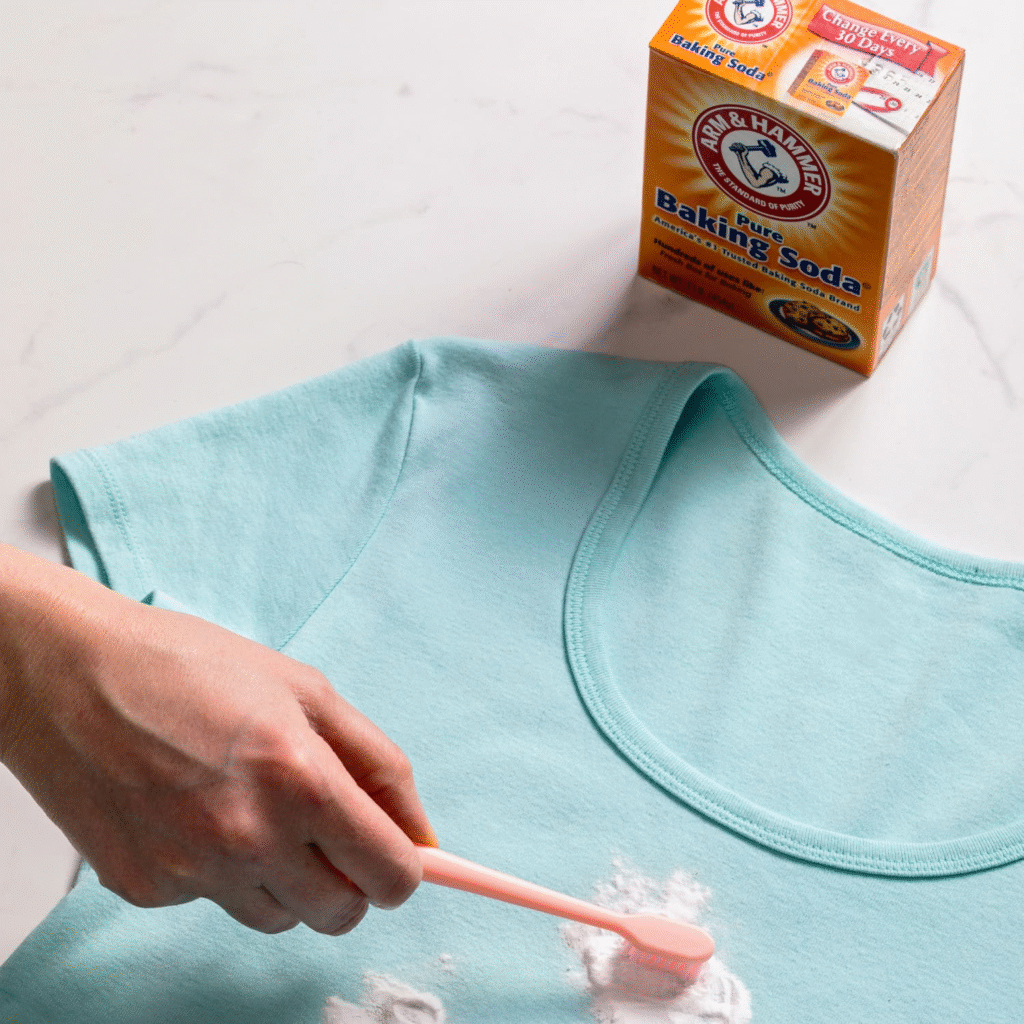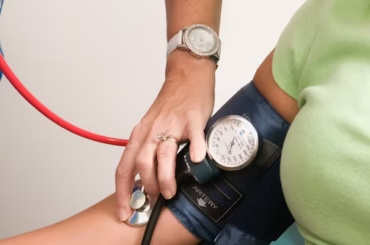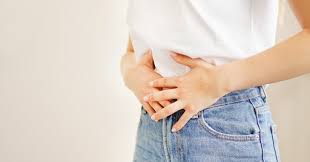Key Takeaways
- Set-in stains can be removed using common household items like vinegar, baking soda, and hydrogen peroxide.
- The faster you act, the better the results, but even old stains can disappear with the right approach.
- Always pre-treat before washing to avoid “baking” stains permanently into fabric.
- Choosing the right cleaning method depends on the stain type and fabric sensitivity.
Introduction

We’ve all been there — you pull your favorite shirt from the laundry, and bam — a nasty set-in stain is staring back at you. Maybe it’s that spaghetti sauce you swore you got out, or coffee that decided to leave a permanent reminder of your morning chaos.
Don’t panic and don’t throw it away. Set-in stains are stubborn, yes, but not invincible. With a little know-how, some patience, and a few kitchen ingredients, you can even vanish old stains.
This guide covers easy, effective ways to remove set-in stains from clothes, no matter what caused them; from grease to wine to grass. So, grab your stained laundry and let’s rescue your clothes like a true cleaning hero!
What Are Set-In Stains, and Why Are They So Hard to Remove?
A set-in stain is what happens when you don’t treat a stain immediately — it dries, bonds with fabric fibers, and becomes part of your shirt’s personality.
Heat, time, or even washing without pre-treating can make stains “bake” into clothes. Break that bond with the right combo of soaking, scrubbing, and chemical reaction.
20 Proven Ways to Remove Set-In Stains from Clothes
Let’s break down 20 tested, easy methods to bring your fabrics back to life. Each method targets specific stains and fabric types because one size does not fit all in the laundry world!
1. The Vinegar and Baking Soda Duo

This classic combo is a powerhouse against most stains.
How to use:
- Pour white vinegar directly onto the stain.
- Sprinkle baking soda on top.
- Let it fizz for 10–15 minutes.
- Scrub gently with a brush.
- Rinse, then wash as usual.
Why it works: The fizzing action lifts particles and breaks down residues without damaging the fabric.
2. Dish Soap and Hydrogen Peroxide
Perfect for greasy or oily stains. It also works amazingly on sweat and food stains.
Mix:
- 1 part dish soap
- 2 parts hydrogen peroxide
- Apply to the stain, gently rub, and let it sit for 15–30 minutes before washing.
Pro tip: Use color-safe peroxide for dark clothes.
3. Lemon Juice and Salt Scrub
Your bright whites will thank you.
Steps:
- Squeeze lemon juice on the stain.
- Add a pinch of salt.
- Rub gently with your fingers or a toothbrush.
- Let it sit under sunlight for 15–20 minutes, then wash.
Why it works: The acid in lemon breaks down discoloration, while salt acts as a natural abrasive.
4. White Vinegar and Baking Soda Soak
For stubborn, older stains that won’t budge.
Directions:
- Mix 1 cup of white vinegar in 2 liters of warm water.
- Add 2 tablespoons of baking soda.
- Soak clothes for 30–60 minutes.
- Wash normally.
Result: Fresh, odor-free, and brighter fabric.
5. Dishwashing Liquid for Oil Stains
Cooking mishaps happen — oil splatters love white shirts.
How to use:
- Apply a few drops of dish soap in the stained area.
- Rub gently to dissolve grease.
- Let it sit for 5 minutes, rinse with warm water, then launder.
Why it works: Dish soap cuts through grease molecules, lifting them from fibers.
6. Hydrogen Peroxide and Baking Soda Paste
A deep-cleaning magic paste.
Steps:
- Mix baking soda and hydrogen peroxide into a thick paste.
- Apply it to the stain.
- Let it sit for 30 minutes.
- Scrub lightly and rinse.
Caution: Test a hidden area first as peroxide can lighten dark fabrics.
7. Vinegar and Cornstarch Spot Treatment
For delicate fabrics or wool.
How to apply:
- Mix vinegar with cornstarch to make paste.
- Apply gently to the stain.
- Let dry, then brush off before washing.
Why it works: Cornstarch absorbs oils while vinegar dissolves residues.
8. Enzyme Laundry Detergent for Protein Stains
Think of blood, sweat, or milk.
Steps:
- Pre-treat with enzyme detergent directly on the stain.
- Leave it for 15 minutes.
- Wash in cool water as hot water can set protein stains.
Result: Cleaner clothes without scrubbing your life away.
9. Rubbing Alcohol for Ink Stains
Pen leaks? No problem.
How to use:
- Place a paper towel under the stain.
- Dab rubbing alcohol using a cotton ball until ink starts transferring.
- Rinse and wash.
Note: Works best on cotton and polyester.
10. Baking Soda and Water Paste
Simple, safe, and effective.
Mix:
- 2 tablespoons baking soda + enough water to form a paste.
- Apply, scrub lightly, let it sit for 15 minutes, rinse, then wash.
Great for: Sweat stains, deodorant marks, and mild dirt.
11. Salt and Cold Water for Blood Stains
Old blood stains? This one is for you.
How to do it:
- Soak fabric in cold salted water for 1 hour.
- Gently rub, then wash with enzyme detergent.
Why cold water: Hot water sets blood proteins permanently.
12. White Vinegar for Coffee & Tea Stains
Steps:
- Dab vinegar on the stain using a cloth.
- Let’s sit for 10 minutes.
- Rinse and wash normally.
Bonus tip: For stronger stains, add a touch of dish soap.
13. Baking Soda and Hydrogen Peroxide Spray
Quick stain rescue method.
Make a spray:
- Mix 1 cup hydrogen peroxide + 1 tablespoon baking soda + 1 teaspoon dish soap.
- Spray on stains before washing.
Works on: Sweat, grass, coffee, and food stains.
14. Milk Soak for Ink and Dye Stains
Weird but effective.
How to use:
- Soak stained fabric in milk overnight.
- Rinse with cold water, then wash as usual.
Science behind it: The enzymes and lactic acid in milk gently pull-out dye particles.
15. Baking Soda and Vinegar for Odor + Stain Removal
When stains come with a side of stink.
Mix:
- 1 cup vinegar and ½ cup baking soda in your washing machine.
- Run a warm wash cycle.
Why it works: Neutralizes odors while lifting discoloration.
16. Hydrogen Peroxide for Sweat and Armpit Stains
Apply:
- Mix 2 parts hydrogen peroxide + 1 part dish soap.
- Rub on armpit stains.
- Leave for 15 minutes, then rinse.
Result: Fresh-smelling, brighter underarms (for your shirts, not you).
17. Vinegar and Borax Combo
Great for white clothes or linens.
How to use:
- Add ½ cup vinegar + ½ cup borax in wash cycle.
- Pre-soak if stains are older.
Why it works: This combo deep-cleans fabric fibers and removes dullness.
18. Oxygen Bleach Soak
A safer bleach alternative.
How to apply:
- Dissolve oxygen bleach powder in warm water.
- Soak clothes for 4–6 hours.
- Wash as usual.
Best for: Colored or delicate fabrics where chlorine bleach is too harsh.
19. Toothpaste Hack for Small Spots
How to use:
- Apply white (non-gel) toothpaste on stains.
- Rub gently with an old toothbrush.
- Rinse and launder.
Why it works: Mild abrasives help lift stains without harming fibers.
20. Baking Soda + Detergent Booster
Use baking soda as a detergent enhancer.
Directions:
- Add ½ cup baking soda with your regular detergent.
- Wash clothes normally.
Result: Brighter whites, neutralized odors, and softer fabrics.
Extra Tips for Fighting Stubborn Stains
- Always check fabric labels before applying treatments.
- Cold water first hot water can “cook” stains in place.
- Avoid drying until the stain is gone. Heat can make it permanent.
- Repeat treatments for older stains; patience pays off!
- Keep a stain-removal kit ready with vinegar, baking soda, and dish soap — your future self will thank you.
Common Types of Set-In Stains and Quick Fixes
| Stain Type | Best Solution | Notes |
| Grease/Oil | Dish soap + hydrogen peroxide | Works best on cotton |
| Blood | Cold water + salt soak | Never use hot water |
| Coffee/Tea | Vinegar + baking soda | Gentle on colored fabric |
| Ink | Rubbing alcohol | Test on hidden spot first |
| Sweat | Baking soda + peroxide | Great for white shirts |
Conclusion
Set-in stains might seem like the end of your favorite outfit, but with the right tricks and a few common household ingredients, they’re totally beatable.
From vinegar and baking soda reactions to peroxide and dish soap magic, you can bring life back to any fabric without a professional cleaner.
Remember, the secret is in pre-treatment and a little patience. Don’t rush it, don’t scrub like a maniac, and don’t dry the item until you’re sure the stain is gone.
Grab your cleaning tools and fight back. Your laundry deserves a second chance.
FAQs
1. Can I use baking soda on colored clothes?
Yes! Baking soda is color-safe and won’t bleach your fabrics. It’s gentle yet powerful enough to lift stains without fading colors.
2. Does vinegar remove old stains?
Absolutely Yes! Vinegar helps break down old residues and works even better when combined with baking soda or dish soap.
3. Can I use bleach instead of hydrogen peroxide?
Only if the fabric label says it’s safe. For colored or delicate fabrics, stick with oxygen bleach or peroxide instead.
4. How long should I soak clothes for tough stains?
Soak for at least 30 minutes. For stubborn, older stains, leave overnight and then wash normally.





